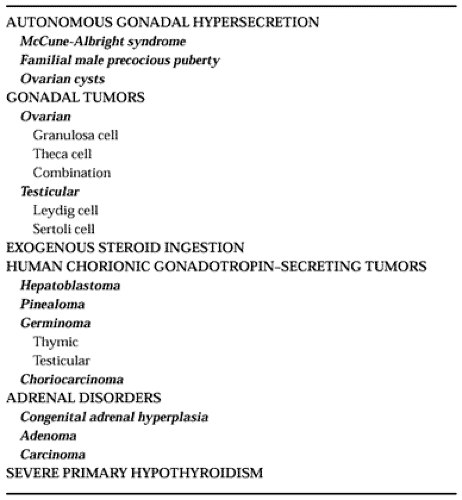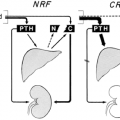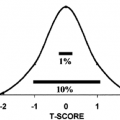GONADOTROPIN-INDEPENDENT PRECOCIOUS PUBERTY
PP may also be caused by sex steroid hormone production independent of gonadotropin stimulation (Table 92-2).
McCune-Albright syndrome is characterized by the triad of polyostotic fibrous dysplasia, café au lait spots (“coast of Maine” configurations), and endocrinopathies, in particular PP (Fig. 92-4). This disorder results from a dominant, early embryonic, somatic activating mutation of the α subunit of the stimulatory guanine nucleotide-binding protein, Gs.The mutation resultsin decreased guanosine triphosphatase (GTPase) activity leading to constitutive cyclic adenosine monophosphate (cAMP) production, increased gene transcription, and subsequent endocrine hyperfunction.45 Estrogen produced by autonomously functioning ovarian follicles leads to cyclical breast enlargement and uterine bleeding, occurring as early as infancy. Prolonged estrogen exposure also leads to growth acceleration, advanced bone age, and eventually secondary activation of the hypothalamic–pituitary–gonadal axis and central PP. Other endocrinologic problems include hyperthyroidism, GH excess, hyperprolactinemia, and nodular adrenal hyperplasia resulting in Cushing syndrome. Hypophosphatemic rickets, hepatobiliary disease, cardiac disease, and sudden death have also been reported.46 The stage during embryonic development when the somatic mutation occurs determines the mosaic tissue distribution of the mutation and, thus, the clinical manifestations. In fact, a Gsα mutation restricted to the ovaries, diagnosed from ovarian cyst fluid analysis, has been reported in a young girl with recurrent ovarian cysts and sexual precocity without bony lesions or café au lait spots (see Chap. 66).47
McCune-Albright syndrome should be considered in any very young girl with signs of estrogenization. Skin hyperpigmentation may not be visible in early childhood. Bone scanning often reveals the pathognomonic lesions. In the presence of significantly elevated estrogen levels, LH levels are suppressed even below the prepubertal range.48 Gonadotropin-independent PP alsooccurs in boys with McCune-Albright syndrome, but less commonly than in girls.
Current treatment of McCune-Albright syndrome results in somewhat disappointing long-term outcomes. Cyproterone acetate, a progestational agent used in Europe but not approved in the United States, is of minimal benefit.49 Testolactone, a first generation aromatase inhibitor, has been shown to be of some benefit in reducing estrogen levels, curtailing the frequency of menstrual bleeding, and increasing predicted adult height.50
However, the therapeutic regimen is cumbersome and the response is usually unsustained.51 More potent aromatase inhibitors, such as anastrozole (Arimidex), may prove more effective. Additionally, the estrogen-receptor antagonist tamoxifen has been reported to be useful in at least one patient.52 GnRH agonists are beneficial only after secondary central puberty has been triggered by prolonged exposure to estrogens.48,53
However, the therapeutic regimen is cumbersome and the response is usually unsustained.51 More potent aromatase inhibitors, such as anastrozole (Arimidex), may prove more effective. Additionally, the estrogen-receptor antagonist tamoxifen has been reported to be useful in at least one patient.52 GnRH agonists are beneficial only after secondary central puberty has been triggered by prolonged exposure to estrogens.48,53
Stay updated, free articles. Join our Telegram channel

Full access? Get Clinical Tree








